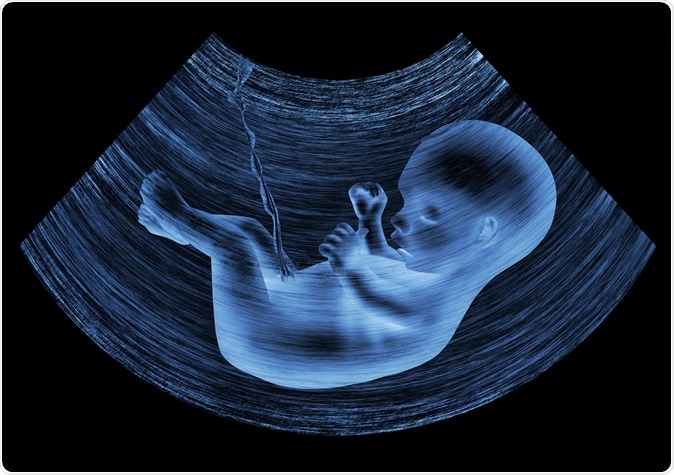A Brazilian woman became the first woman to successfully deliver a baby after having received a womb transplant from a dead donor.

Ultrasound image of baby in mother's womb. Image Credit: zffoto / Shutterstock
There have been instances around the world including those from United States and Sweden, where wombs from living donors have been successfully transplanted and allowing the receivers to carry pregnancies and give birth to live babies.
This is the first time that womb from a dead donor helped carry a pregnancy successfully says the team of doctors who made this possible. The case report details were published in the latest issue of the Lancet.
The research was led by Dr Dani Ejzenberg of the University of São Paulo who said that when the donor is deceased, there is lowered risk of the whole procedure. There is no risk to the donor unlike when there is a live donor. Costs too are much lower because the surgery and post-surgical hospitalization is not necessary. She added that feasibility of finding a living donor as well as coordinating both surgeries i.e. removal of the womb from the donor and its transplantation, can both be a challenge. The team said that deceased donation of the uterus has been attempted before but this is the first time that the procedure has been a success and has resulted in a live and healthy birth of a baby girl.
The team writes in the case report that they obtained the womb from a dead 45 year old woman who had died of a burst aneurysm in the brain. This lady had been successfully pregnant three times before her death. He womb was transplanted onto a 32 year old woman who was born without a womb and thus could not get pregnant. This recipient had ovaries which meant that her ova or eggs could be obtained for the process of In vitro fertilization (IVF).
The organ was removed from the donor and a ten a half hour surgery was undertaken in the recipient in September 2016. The womb transplanted weighed 225 gm. The womb was connected to the recipient’s vagina and the ligaments and blood vessels around it were all attached. The woman then received medications called immunosupressants that would prevent her body from rejecting the transplanted organ. The team monitored her closely for any form of organ rejection that is common after such transplant operations.
The woman had started menstruating a month after the surgery and after seven months, her womb was implanted with an embryo via IVF treatment. She carried her pregnancy successfully for 35 weeks and then delivered a healthy baby girl weighing 2.5kg (about 6lbs), the team wrote.
Once her pregnancy was completed, in the same caesarean section by which the baby was removed, the team of doctors removed the transplanted womb. This was done to remove her need for immunosupressants that she would need for life if she had continued to keep the donated womb within her. Ejzenberg said that the process of keeping her on medication would be expensive and these funds could be used to help other women with similar problems. “You have a substantial number of patients that can benefit from this technique [of womb transplant],” said Ejzenberg.
In an accompanying editorial experts from IVI-RMA Global (a fertility company) have written that more research would be needed to refine the technique so that it could be used in other woman.
Soure: https://www.thelancet.com/journals/lancet/article/PIIS0140-6736(18)31766-5/fulltext